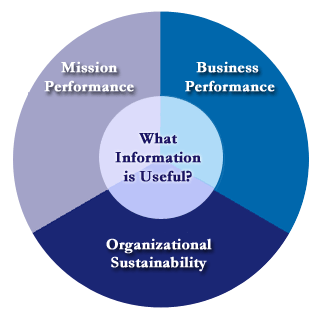Demonstrating Value Blog
 In past posts you may have followed our research project with the BC Association of Farmers’ Markets to develop a Farmers’ Market Impact Toolkit.This toolkit was piloted with 9 farmers markets in the summer of 2012 in British Columbia (Canada) and a final version of the toolkit is posted here on our website.
In past posts you may have followed our research project with the BC Association of Farmers’ Markets to develop a Farmers’ Market Impact Toolkit.This toolkit was piloted with 9 farmers markets in the summer of 2012 in British Columbia (Canada) and a final version of the toolkit is posted here on our website.
Here are just some of the insights into the important value of farmers’ markets in local communities based on the six markets that completed surveys with their stakeholders. This represents 117 customers, 84 vendors, 5 market managers and 18 external stakeholders.
While these data are not a statistically validated sample that can be used to extrapolate findings to farmers’ markets generally, ...
read moreTracking impact measurement in social enterprises can come out of the basic process and system development that should naturally occur in any business. I recently advanced this notion in my presentation at the Social Enterprise World Forum last week, and have been thinking more about how this should be done. Here are some ideas.
Below is a typical diagram of typical systems and processes that are developed in an enterprise (I nabbed this from Google images the night before the presentation). I added in additional features that are unique to social enterprise in blue (not all apply to all enterprise, but many to most). Note that the blue text doesn't float, but is quite rooted in processes that are part of any business, and the subject of process development. Since process and system development is intrinsically linked with tracking, you automatically have the basis for impact tracking too! Most softwares solutions include great data tracking features...
read moreI recently spoke with Michelle Strutzenberger, of Axiom News, about the state and future direction of impact measurement in anticipation of my participation in the panel 'Measuring and Demonstrating Impact' at the Social Enterprise World Forum taking place in Calgary October 2-4. It was a great opportunity to reflect about my experience in the last six years of working in this area, and to articulate where I see this work evolving. The story will be published as part enpCanada stories, the news service for Enterprising Non-profits Canada.
Here are my reflections to Michelle's questions:
1. What’s the commitment you hold that brings you to be involved...
 "There are known knowns; there are things we know that we know. There are known unknowns; that is to say, there are things that we now know we don't know. But there are also unknown unknowns - there are things we do not know we don't know."
"There are known knowns; there are things we know that we know. There are known unknowns; that is to say, there are things that we now know we don't know. But there are also unknown unknowns - there are things we do not know we don't know."
-Former US of Defense, Donald Rumsfeld
This infamous quote left some people befuddled, others impressed. While this quote emerged from the context of linking the government of Iraq with weapons of mass destruction, uncertainty (everything but the known knowns) pervades the world of evaluation, social impact assessment and performance measurement. Still, we acknowledge it in a fairly limited way, and dealing with it explicitly is...
read moreI came across this nifty tool when I attended the 6th ANSER conference in Victoria, June 6, 2013. The Community Capital Tool is a decision support and assessment tool, based on the community capital framework, that is designed to facilitate and ground community discussion about integrated planning and monitoring.
At the conference, Gretchen Hernandez, Sean Markey, Alfredo Seoane and Alberto Mollinedo described the tool and its application in Bolivia.
The community capital framework stems from the work of Cornelia and Jan Flora who advanced that communities that were successful in supporting healthy sustainable community and economic development paid attention to seven types of capita - natural, cultural, human, social, political, financial and built – and how they interacted and built on one another....
read moreAre you about to engage in strategic or business planning in your organization? Planning offers a great point to think about what has and hasn’t worked in the past, how you create value (for community, within your business and organization), how you can create even more value, and ways to measure your success moving forward. Demonstrating Value can complement planning activities in a number of ways.
The first way is to help you focus on the big picture, and to ensure that you bring in different perspectives into your planning. Demonstrating Value tools are build around a holistic picture captured in this lens:

While this lens was developed to think about measurement, it can useful for framing your planning conversations:
An Organizational Sustainability Perspective – Are you developing the processes, systems and...
read moreIf you're in the business of green building or promoting sustainable building and communities, check out our new guide that has recently been added to Demonstrating Value's Resource Library. In it you'll find guidance on approaches to monitoring and assessing the mission-related impacts of green building and community design, which may be relevant for social enterprises (and programs) that seek to:
- Create awareness about the environmental, social and economical advantages of green buildings, and provide practical information on how to build green;
- Promote new urbanism approaches to reduce sprawl in suburban developments;
- Develop (pilot) projects that showcase green building practices;
- Provide incentives to retrofit existing buildings to be more energy and water efficient.
Rather than present a list of indicators, we present different methodologies for assessing impact that can be applied to different types of...
read more When CBC’s Fifth Estate program launched Rate my Hospital last week, I couldn't help but immediately look up the grade of my hospital across the street. I felt smug that Eagle Ridge wasn't one of the Lower Mainland's batch of terribly ranked hospitals. But should I really sleep better? For the ranking, grades were assigned to 240 acute-care hospitals across Canada based on expert-informed method using five publicly available indicators. The site also allows visitors to rate hospitals in 5 categories - respect, communication, timeliness, cleanliness and whether they would recommend it.
When CBC’s Fifth Estate program launched Rate my Hospital last week, I couldn't help but immediately look up the grade of my hospital across the street. I felt smug that Eagle Ridge wasn't one of the Lower Mainland's batch of terribly ranked hospitals. But should I really sleep better? For the ranking, grades were assigned to 240 acute-care hospitals across Canada based on expert-informed method using five publicly available indicators. The site also allows visitors to rate hospitals in 5 categories - respect, communication, timeliness, cleanliness and whether they would recommend it.
Based on many of the reactions of the powers-that-be in...
read more It’s not all about the games. The advent of smart phones and tablets can simplify the collection and analysis of data, as well as powerfully capture narrative, in ways we only could imagine until recently. The number of apps available grows daily and it can be hard to know what is even possible to do. I've provided a list of a few apps below to showcase the range of what apps can do in this area. Check app libraries and the internet for more. In choosing your own apps, look for functions such as whether and how you can export data. (I recently lost all my data in a goal setting app, when the version was updated).
It’s not all about the games. The advent of smart phones and tablets can simplify the collection and analysis of data, as well as powerfully capture narrative, in ways we only could imagine until recently. The number of apps available grows daily and it can be hard to know what is even possible to do. I've provided a list of a few apps below to showcase the range of what apps can do in this area. Check app libraries and the internet for more. In choosing your own apps, look for functions such as whether and how you can export data. (I recently lost all my data in a goal setting app, when the version was updated).
GoalScape: Track goals and reporting
Fluid Surveys: Take surveys on the move
... read moreSocial change leaders hit the ground running: challenges come up, forks in the road present themselves, and their business models constantly evolve. Ideally, they have some good data on hand that can help with tough decisions, and that provide insights about social, environmental and financial bottom lines.
Social innovation, by its very definition, involves finding new, and more effective approaches to addressing the complex social and environmental problems of our times. We need to collectively learn from what is happening so that we can scale these efforts. Impact measurement is seen as a critical need to developing the sector and building new financial support. Yet, if nascent impact measurement methods are imposed on organizations pre-maturely, we may actually be limiting growth.
The problem with many impact measurement efforts is that organizations get stuck tracking easy-to-measure indicators that aren’t fundamentally important to the...
read more